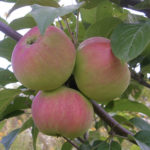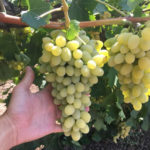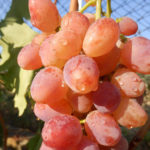Planting onions in the fall (before winter)
In the "arsenal" of each gardener there is a whole stock of agrotechnical techniques, which can be conditionally divided into mandatory and optional. The first include those without which the cultivation of vegetables almost never does - planting, watering, weeding, fertilizing
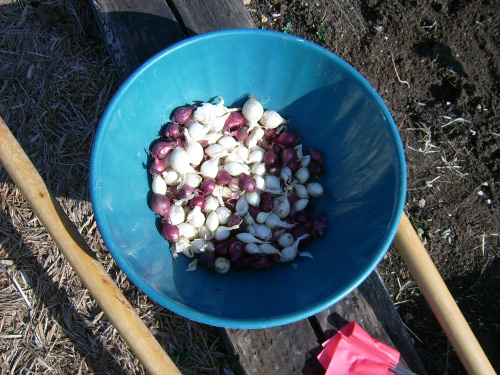
It must be said that many owners of backyard and summer cottages treat the autumn sowing of vegetables, to put it mildly, with distrust. Not only that, due to unpredictable weather conditions, the seeds can either start growing early (during a prolonged autumn) or freeze out (during a harsh winter), but there is also a high probability that beets and carrots can “go into bloom”; and the early harvest is stored, as a rule, not too long. When growing onions, most amateur gardeners also prefer to adhere to the traditional scheme: in the spring they plant (sow) seedlings to get a turnip harvest by autumn, and early spring greens are grown exclusively from perennial varieties - multi-tiered, batun and chives, which grow up to 5-6 years in one place, they winter with absolutely no problems, during the growing season they give several harvests and in terms of care they cost a minimum of attention. However, as the practice of the last decade has shown, the autumn planting of onion sets has many advantages even in comparison with the traditional cultivation of this crop and, oddly enough, often changes for the better the attitude of even those amateur gardeners who have problems with onion cultivation every year ( for example, in the case of irregular watering at a summer cottage or a constant invasion of diseases and pests).
Firstly, when planting before winter, there is no need to store the planting material of onion sets, which is especially important for the smallest bulbs - wild oats (less than 1 cm in diameter), which often dry out and deteriorate after wintering in a warm room. With the correct autumn planting, they not only keep well, but next year they grow to the size that is usually given by the spring planting of larger planting material (bulbs 1.5 - 3 cm in diameter). Taking into account the fact that when planting in spring the harvest of wild oat is always more "modest" in size, sub-winter planting can be considered definitely a more profitable option for growing it. As for the planting of other categories of onion sets in the fall - the first (1 - 1.5 cm), the second (1.5 - 3 cm) and the sample (more than 3 cm in diameter) - it is recommended to resort to it exclusively for growing green onions or getting seeds. Since, in comparison with wild oats, such planting material in early spring gives more powerful greens, this is definitely beneficial in the case of selling such products.But, alas, due to the high tendency to shooting during autumn planting, the “traditional” high-quality harvest from such bulbs is likely to be lost, although there is a possibility of early obtaining seeds (nigella), which, by the way, can also be successfully sown before winter.

Secondly, among the varieties of onion sets there are specially bred for autumn planting / sowing - the so-called "winter crops". Moreover: if varieties of other vegetable crops for winter sowing are chosen only on the basis of "short-day plants", winter varieties of onion sets are characterized not only by the ability to form a high-quality crop in conditions of a short and medium day, but also by excellent frost resistance (up to minus 15 ° C in snowless winters and minus 25 ° C under snow), as well as high resistance to shooting, pests and diseases. The following varieties and hybrids possess such irreplaceable properties: "Elodie", "Senshuy Yellow", "Buffalo", "Avanti", "Augusta", "Radar", "Kip-Well", "Sturon", "Danilovsky", "Odintsovets" "," Stuttgarten Riesen "," Ibis F1 "," Imago F1 "," Balstar F1 "," Extra Earley Gold F1 "," Music F1 "," Wolf F1 "," Radar F1 "," Panther F1 "and others ... And in Siberia, the best results are shown by the varieties Ellan, Strigunovsky, Swift, Arzamassky local, Extra Ativ Parisien, Bessonovsky, Radar, Malakoff, Siberian early ripening, Siberia F1 "," Echo F1 "
Thirdly, the winter planting of onion sets allows you to get greens already in early May, and high-quality bulbs - at the end of June, while with traditional spring planting, these dates are shifted by 1 - 1.5 months - at least to June and August. And note: unlike other vegetable crops, an early harvest of winter onions can withstand long-term winter storage as well as turnips grown in the usual way (during spring planting / sowing).
Less noticeable, but no less significant advantages of winter onion sets can be attributed to the fact that planted in autumn it needs much less watering, since in favorable weather it manages to develop normally exclusively due to precipitation and melt water, even in remote and rarely irrigated summer cottages. plots. In addition, during the winter, winter onions form a dense root lobe on the bottom, which in spring protects them from damage by onion flies, and early ripening of plants, in turn, "provides" protection against downy mildew. As for saving time, this advantage can be considered relative, since some owners do not have enough time either in spring or in autumn. But in terms of saving the area of planting before winter, many can help out, because on a bed freed from winter onions before autumn, you can manage to grow another crop of early-ripening vegetables.
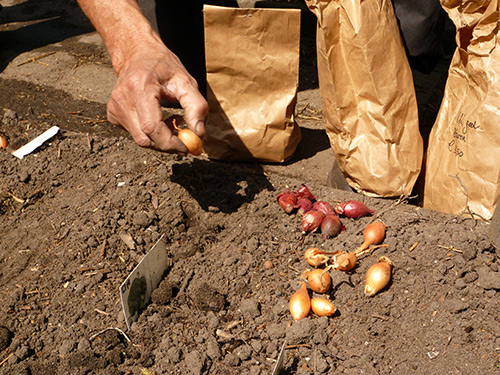
Speaking about planting onions in the fall, one cannot but say that winter onion sets can be grown in two ways - from a fine fraction (wild oat) and from seeds. The agricultural technology of both methods is somewhat different, so it is worth considering the features of each of them. For a successful wintering, wild oat (like a larger planting material) must take root, but not germinate, and therefore it is planted at the same time as winter garlic - 3 to 4 weeks before the onset of stable frosts. These dates approximately fall on the period when frosts begin (at night the temperature regularly drops to minus 3 ° C), but the soil has not yet had time to freeze. Considering that in different regions the weather conditions are set in different ways, to determine the timing of the autumn planting of onions in Siberia, it is recommended to focus on the end of September - early October, in central Russia - at the end of October - early November, and in the south - in November. Onions should not be planted at an earlier date, since only 2 to 3 weeks are enough for rooting, after which, with early planting, it begins to grow and jeopardizes future successful wintering.It is less risky to plant it a little (!) Later, but on a bed previously covered with a dry leaf, which somewhat delays the rapid freezing of the soil. Please note: small onion sets planted in autumn do not need to be watered, but before planting even wild oats are strongly recommended to be sorted into small (up to 0.5 cm) and large (from 0.5 to 1 cm) fractions in order to “level out” the seedlings as much as possible in spring.
As for the cultivation of winter onions from nigella, a significant difference of this method is that for wintering the plants must necessarily go already grown - with 3 to 4 leaves (the diameter of the root collar is 5 to 7 mm). Taking this into account, the very procedure for sowing seeds will have to be carried out at the end of summer (mid - end of August), and then, if there is insufficient precipitation, until late autumn to ensure also periodic watering of the sown beds. In comparison with the above method, growing winter onions from seeds looks more laborious and has more disadvantages. Firstly, many owners do not like the need for watering in the fall, when most crops no longer need it. Secondly, there is a high probability of incorrect calculation of the sowing time: too early increases the likelihood of shooting, and too late, the plants do not have time to form enough greenery and hibernate worse. Third, with this method, onions are susceptible to diseases and pests (and weed overgrowth) in the same way as with ordinary spring sowing. Nevertheless, experienced gardeners have learned to cope with all these shortcomings and even find their advantages in this method of growing winter onions. To combat diseases and pests, they compact or plant onion crops with rows of carrots, marigolds and calendula, which scare away onion flies and bear, and use fungicide treatments. In order not to be mistaken with the timing of sowing, they carry it out in several passes and in case of failure with the first batch, all of it is left for seeds. The main advantage is that in the fall, lovers of autumn sowing of onions have vitamin greens on the table, and in the spring, thinning thickened crops, in addition to greens, they also get hardened seedlings, which are successfully transplanted to a new place. And, of course, by the beginning of June, a fully ripe crop of turnip onions is also harvested.
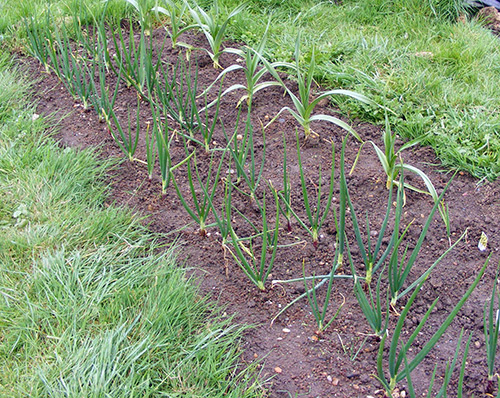
If planting winter onions in the fall is a new thing for you, then regardless of the chosen method of growing, prepare a place for this crop in advance - at least a month in advance. It should be not shaded, with a slight slope or on a hill (without stagnation of moisture after autumn precipitation or spring-winter melting of snow), with sandy loam or loamy, non-acidic nutrient soil. The best precursor for onions is usually carrots, although it will develop well after other crops (legumes, greens, early cabbage, potatoes, etc.), but only if they were harvested no later than mid-July. In open places, it is advisable to foresee in advance preventive measures for snow retention (sowing sunflower, corn, calendula curtains across the direction of the prevailing winds
Soil preparation should begin with harvesting the predecessor and controlling weeds. The soil needs to be deeply loosened with a pitchfork, removed the roots of weeds and fertilized for digging at the rate of 2 - 3 kg of humus and 2 tablespoons of superphosphate per square meter of area. If there is no humus, you can enrich the soil with mineral fertilizers - use 20 - 25 g of superphosphate and 10 - 15 g of potassium salt or 30 g of ecofoska per square meter of area. After digging, the bed must be carefully leveled and left for a month to shrink the earth.
To sow onion seeds (at the end of August), you need to make shallow grooves (2 - 3 cm) with a row spacing of 35 - 40 cm and sow at the rate of approximately 35 - 40 seeds per running meter. A high density is recommended only if the seeds have poor germination. After the procedure, the grooves should be carefully filled up and compacted, and then, in dry weather, at least once a week - water one and a half, and with the emergence of shoots, regularly loosen the aisles and remove weeds. Plants ripe for wintering (bulbs with 3 - 4 leaves) are recommended to slightly huddle for the winter (by 5 - 7 cm) in order to protect the bulbs from bulging and freezing, and to organize an easy cover of the beds with spruce branches, dry tops and other improvised material for snow retention ... In the event of a severe winter threat, the use of agrofibre (white, light and breathable) is very effective, but it is necessary to cover the beds with it immediately before the onset of frost, since too early shelter, alas, negatively affects the wintering of onions. In the spring, even before the start of the growing season (as soon as the ground begins to thaw), the mulching material (or agrofibre) should be removed and the compacted soil must be loosened. In the future, until the beginning of summer, caring for the beds of winter onions is no different from the traditional care of onions planted in spring, and includes, as necessary, the control of weeds, pests and diseases, fertilization and regular watering. Please note: to obtain a high-quality harvest of turnip onions, the density of its sowing after leaving wintering should be no more than 12 - 15 bulbs per linear meter, therefore, with a greater thickening already in early spring, it is recommended to thin out the crops as soon as possible, and use the plucked plants for greens or in as seedlings for spring plantings.
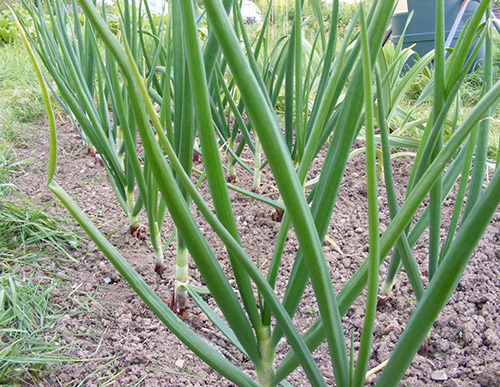
For planting the fine fraction of onion sets in autumn (in September - November), soil preparation should be carried out in the same way, but watering, as already mentioned above, is not necessary. Note: before winter, it is recommended to plant onion sets a little deeper than during spring planting - to a depth of 4 - 5 cm. Furrows should be done at a distance of 20 - 25 cm from one another and plant an oat onion with an interval of 10 - 15 cm in a row or nests 2 - 3 bulbs with the same interval and a distance of 2 - 3 cm between bulbs in the nest. After the procedure, the furrows should be covered with loose soil, and already with the onset of frost, cover the bed with a layer of light mulch - plant tops, wood shavings, coniferous litter, spruce branches
Despite the fact that the technology of planting onions before winter is somewhat different from the traditional one, it certainly cannot be called too complicated. The main rules: do not plant onions in the lowlands, so that they do not rot due to soaking, do not cover too early, so as not to provoke damping, and do not overfeed it with nitrogen fertilizers in autumn, so as not to stimulate the active growth of greens to the detriment of the main crop of turnip onions. As practice has confirmed, the correct approach to this agrotechnical technique with a reasonable choice of varieties gives the gardener the opportunity to "regulate" the process of growing onions and the timing of obtaining both greens and a high-quality crop of turnip and planting material (seeds and small fraction of onion sets) at lower costs of organization watering and disease and pest control. Make planting and sowing onions in the fall at least temporarily as your "good habit" and soon you will not only not want to give up on it, but you will also recommend it to all your friends.
